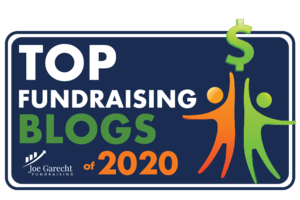While the story at some individual charities might be different, charitable giving in the sector for the first half of 2018 is lagging behind the first six months of 2017, both in terms of the number of donors and the amount donated. That’s according to a recent report from the Fundraising Effectiveness Project.
As I write this post, the stock market has just taken a two-day beating with the Dow Jones Industrial Average down 1,378 points.
 I won’t blame you if you’re feeling a bit pessimistic about philanthropy these days. However, I will respectfully suggest that you shouldn’t be overly worried. As I wrote in the current issue of Advancing Philanthropy, the official magazine of the Association of Fundraising Professionals, there are actually plenty of reasons for us to be optimistic about the current fundraising environment.
I won’t blame you if you’re feeling a bit pessimistic about philanthropy these days. However, I will respectfully suggest that you shouldn’t be overly worried. As I wrote in the current issue of Advancing Philanthropy, the official magazine of the Association of Fundraising Professionals, there are actually plenty of reasons for us to be optimistic about the current fundraising environment.
In my article for AFP, I show you how you can be your own fundraising superhero with six tips that will help you control your fundraising destiny. I also detail nine reasons for you to be upbeat about the current philanthropic environment as you seek year-end gifts. However, for now, I’ll just highlight some of the reasons why you should be upbeat about fundraising as year-end and the start of a new year approach:
1. Stock Market Growth. Despite the hit the stock market took this week, it remains above the 52-week level. An adjustment was expected. While volatile, the stock market is likely to stabilize somewhat and even continue to grow.
2. Dire Predictions Really Are Not that Dire. Some have predicted that the new federal tax code will negatively affect philanthropic giving. While it’s too soon to draw a firm conclusion, we do know that even if the worst-case prediction comes true, overall philanthropy will once again be approximately two percent of Gross Domestic Product, where it has been for decades.
3. Economic Growth. GDP growth for the first half of the year has been strong. If economic growth continues, as the Federal Reserve believes it will, this will likely have a positive effect on charitable giving. Remember, there’s a long correlation between philanthropy and GDP.
4. New Tax Code. For both individuals and corporations, a reduction in taxes makes more money available for charitable contributions. For example, many corporations (e.g., Wells Fargo, Southwest Airlines, JP Morgan Chase & Co., Best Buy, BB&T, Apple, Ally Financial, and others) have announced commitments to significantly increase corporate giving.
5. Increase in the Deduction Limit. The new tax code lifts the deduction limit from 50 percent to 60 percent of adjusted gross income thereby making donating generously more attractive for wealthy donors.
6. Wage Increases. As the economy heats up, wages are increasing. Increased wages mean increased disposable income which will likely lead to increased giving.
7. Lower Unemployment Rate. The unemployment rate is at a 50-year low. With more people working and earning, more people will be in a position to give.

Be your own superhero!
8. High Consumer Confidence. We’ve seen significant growth in consumer confidence, which now sits at a 17-year high. When consumer confidence rises, so does consumer spending. People might allocate some of their increased spending to charitable causes.
9. Real Estate Values Climbing. Increasing home values combined with an increased home-ownership rate means individuals have appreciated property they can donate in life or as part of an estate plan. It also helps foster a sense of personal financial wellbeing that can help fuel even greater consumer confidence.
In the pages of Advancing Philanthropy, I elaborate on the above list. I also point out that, while the fundraising environment is positive, increased charitable giving will not simply just happen. We still need to work hard at it. That’s why I share six tips to help you raise more money.
Superheroes confidently act boldly to meet challenges. For you, there are certainly challenges, but there are also fundraising opportunities. Rather than being a fearful victim of the new tax code’s challenging provisions or the economic bumps along the way, be your own superhero by confronting challenges and seizing opportunities that have been created or maintained. If you do, I’m confident that you’ll raise the money your organization needs.
You might also want to checkout my post, “Fantastic News and Opportunity for the Nonprofit Sector,” which has 10 additional tips to help you raise more money. Also, when you visit the current issue of Advancing Philanthropy to read my piece, be sure to checkout the other excellent, helpful articles as well.
That’s what Michael Rosen says… What do you say?








